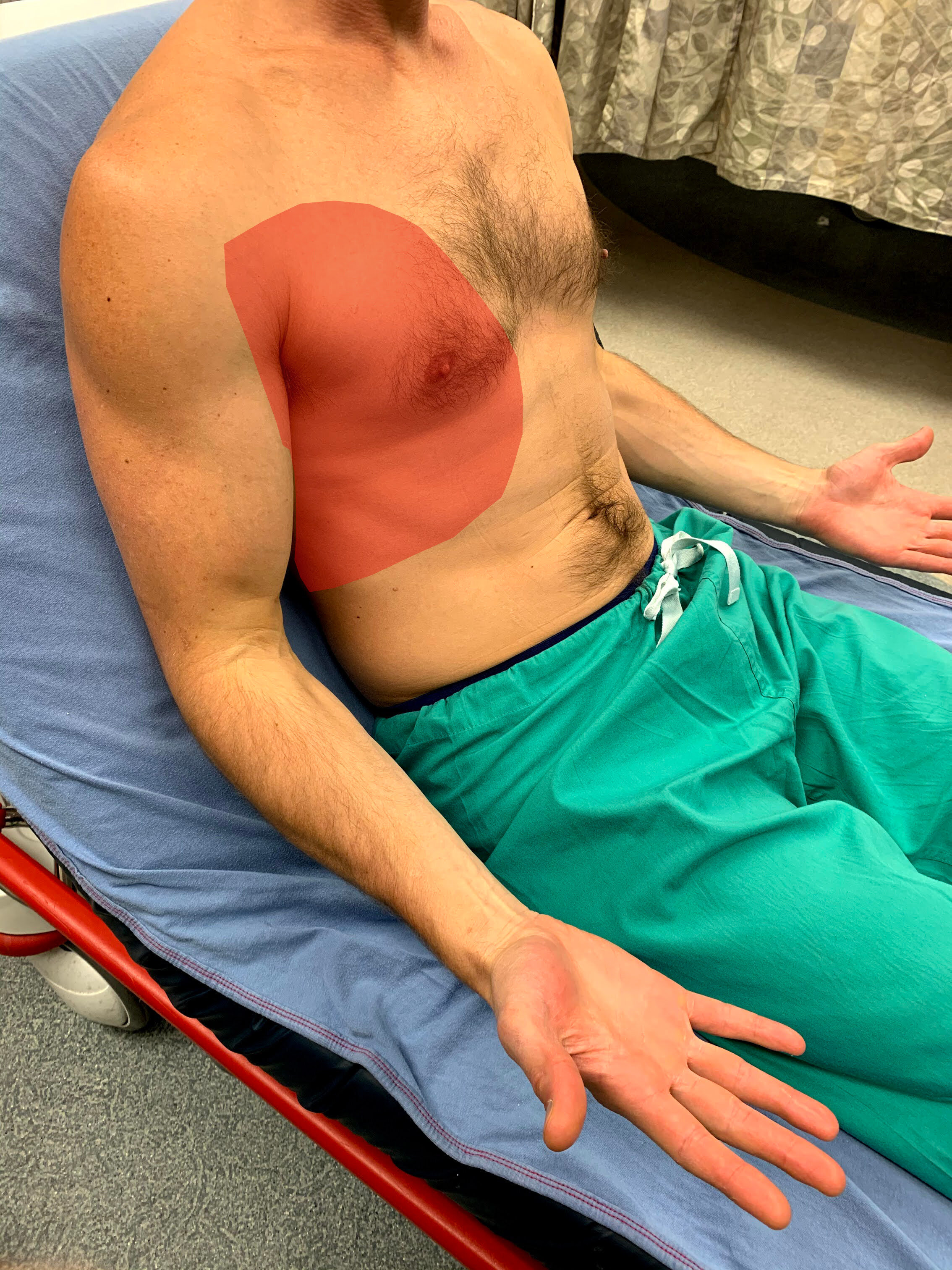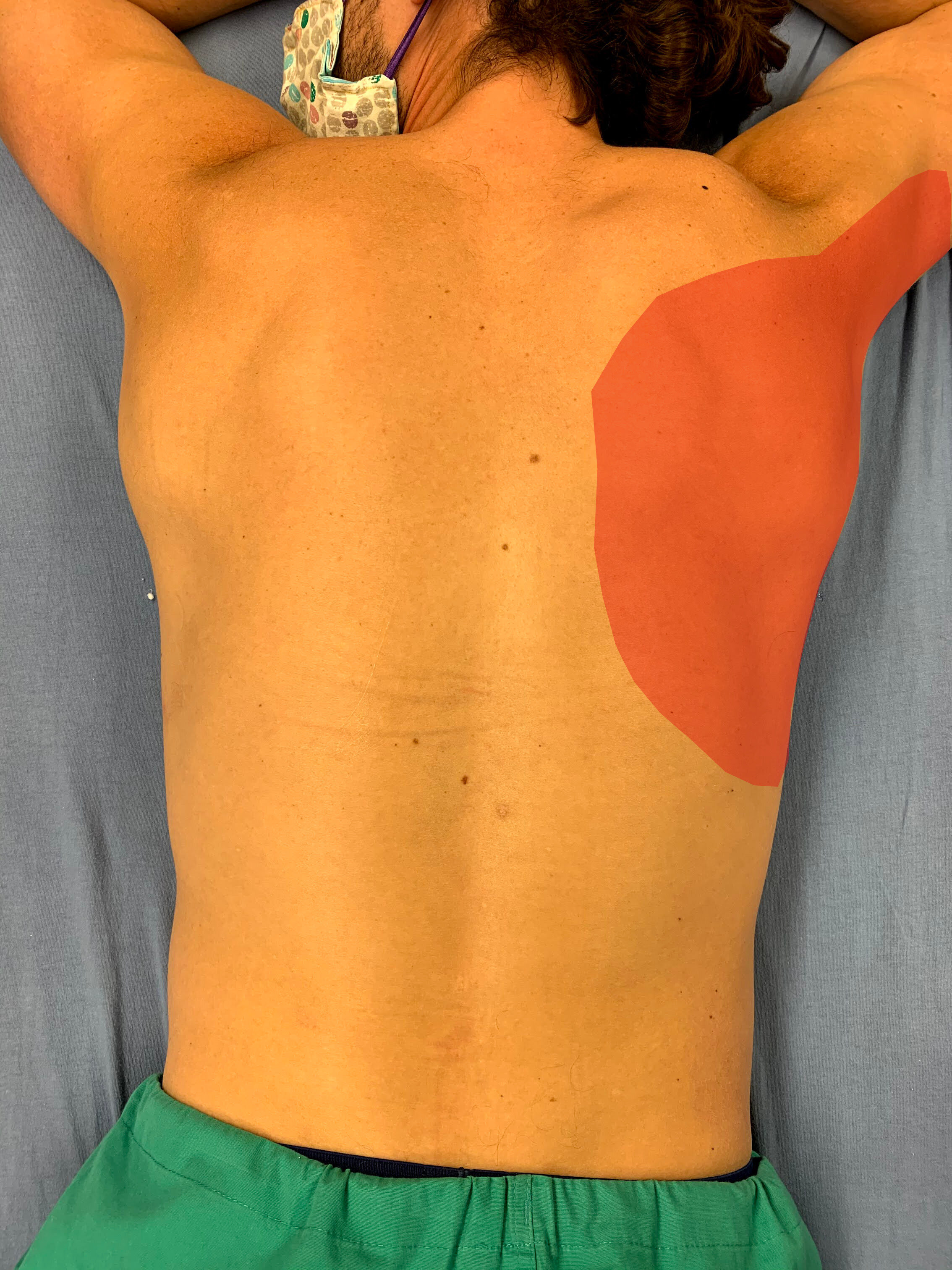Thoracoabdominal Blocks
The serratus anterior and erector spinae plane blocks are used to provide analgesia for injuries involving the trunk. The plane injection nature of these blocks allows a single injection to provide analgesia to a large area of the body. This includes analgesia of the bony structures and skin/soft tissues.
Serratus Anterior Plane Block
Indications: Multiple rib fractures, especially from T3-T10
Considerations & Technical Details
Considerations:
Ensure injection is attempted with a rib in constant view to prevent inadvertent pneumothorax or intrapleural injection.
While pain from lateral and anterior rib fractures will be effectively managed with this block, more posterior rib fractures may not be adequately addressed and may benefit from an erector spinae plane block instead.
Due to the large volume of this block, be sure to calculate a maximum safe dose of anesthetic (using an app such as SafeLocal or MDCalc). If needed, the anesthetic can be diluted 1:1 with normal saline to increase volume while avoiding toxicity.
Transducer: High-frequency linear probe
Needle: 18-22g 3.5 in (8.9cm) spinal needle
Anesthetic volume: 20-40 mL
Target of Anesthetic: Anesthetic spread along the fascial plane between serratus anterior and latissimus dorsi muscles.
Positioning
Position the patient in lateral decubitus with the unaffected side down. Place the probe in a transverse orientation along the mid or anterior axillary line at the level of the nipple. Identify the latissimus dorsi posteriorly on the screen. Deep to this is the serratus anterior muscle overlying the ribs. Inject anesthetic along the plane between latissimus dorsi and serratus anterior, with careful monitoring of needle tip to avoid pneumothorax or intrapleural injection.
More Examples
Erector Spinae Plane Block
Indications: posterior rib fractures, analgesia for varicella zoster (shingles), vertebral compression fractures, chest wall lacerations/abscesses
Considerations & Technical Details
Considerations:
For symptom control in herpes zoster, inject one level above or below the affected dermatome to avoid injecting through the zoster rash.
Ensure injection is attempted with the transverse process in constant view to prevent inadvertent pneumothorax or intrapleural injection.
Due to the large volume of this block, be sure to calculate a maximum safe dose of anesthetic (using an app such as SafeLocal or MDCalc). If needed, the anesthetic can be diluted 1:1 with normal saline to increase volume while avoiding toxicity.
Transducer: High-frequency linear probe
Needle: 18-22g 3.5 in (8.9 cm) spinal needle
Anesthetic volume: 25-30 mL
Target of Anesthetic: Anesthetic spread along fascial plane between transverse process periosteum and erector spinae muscle.
Positioning
Position the patient prone or have the patient sit up facing away. Place the probe midline in a sagittal orientation. Identify the spinous processes as small and very superficial hyperechoic structures. Slide the probe laterally to the affected side. Identify the transverse processes as the superficial and wide bony structures with no associated pleural slide. The posterior ribs will appear more laterally as rounder and deeper structures, and will have associated pleural sliding. With the probe located over the targeted transverse process, advance the needle in-plane until the tip contacts the transverse process periosteum and bony resistance is felt. Hydrodissect approximately 1-2 mL of anesthetic to confirm needle tip placement. Once confirmed, inject 30 mL of anesthetic.













